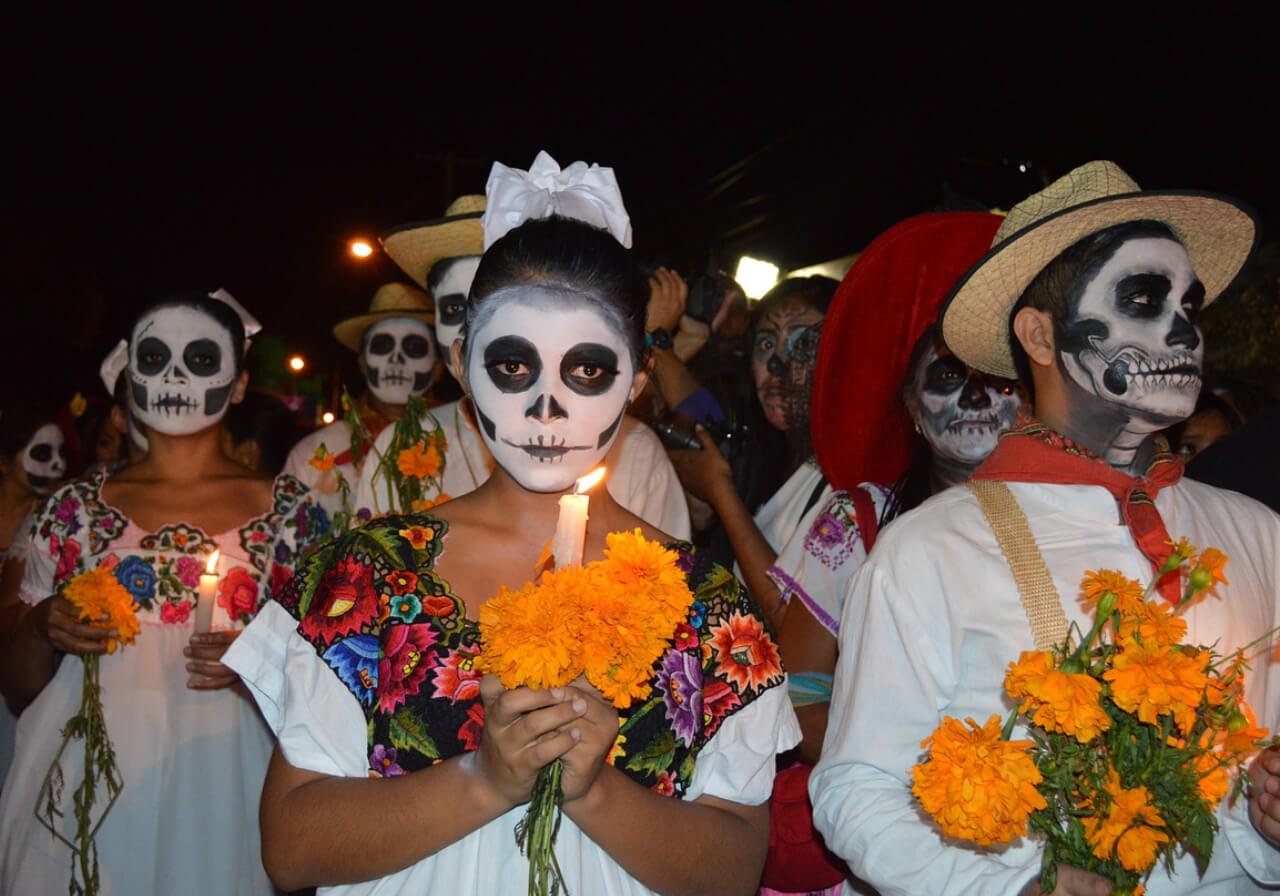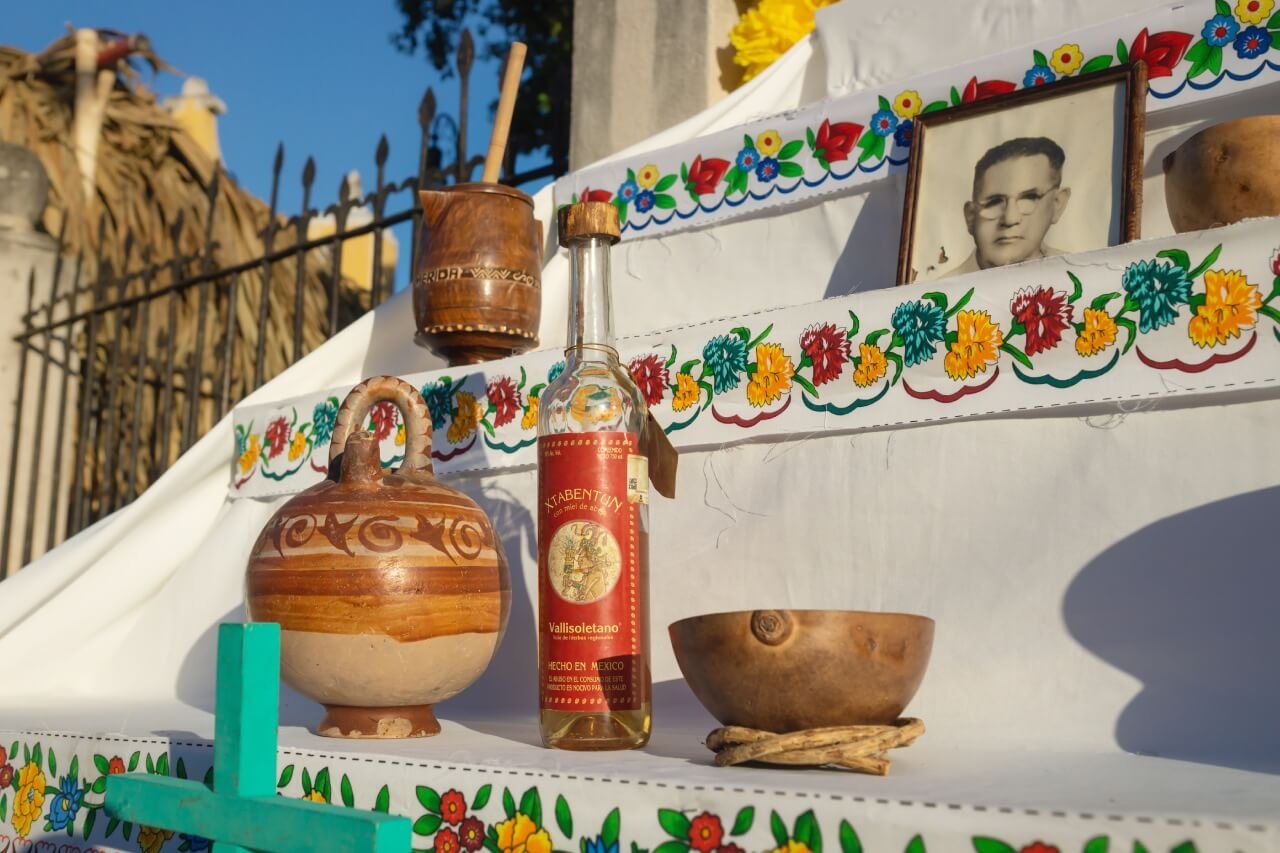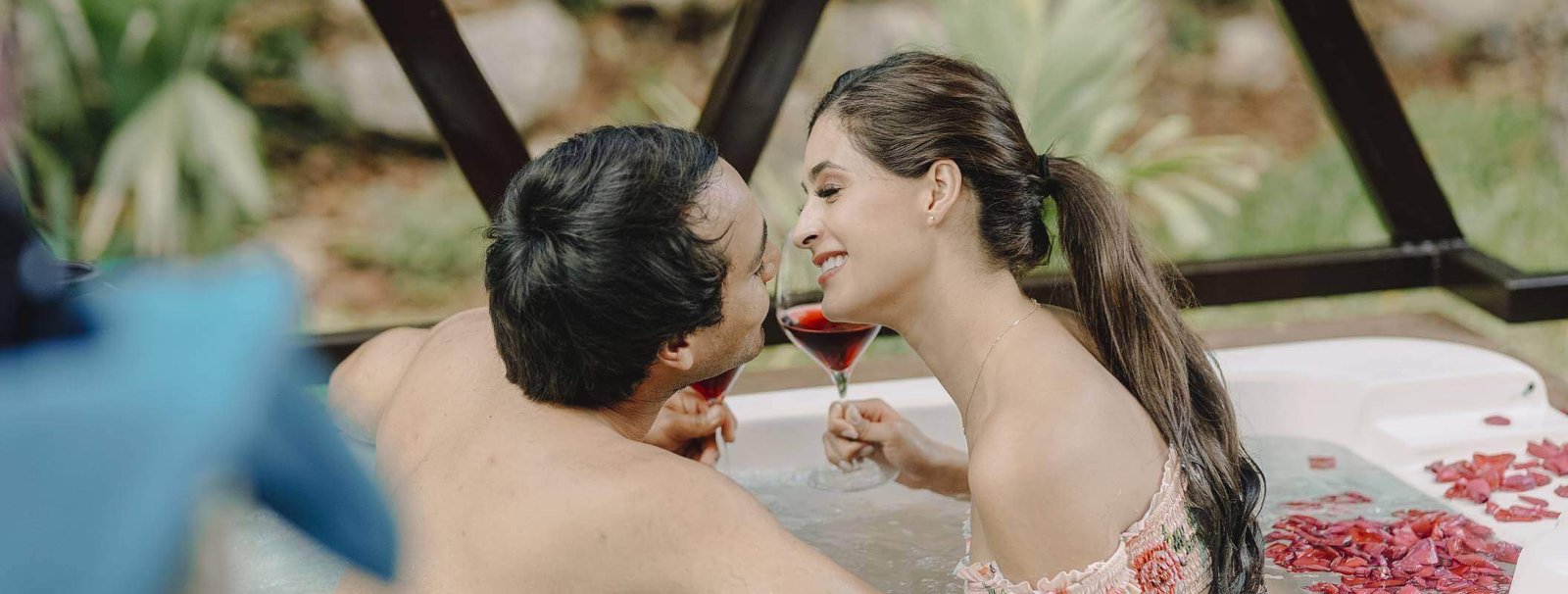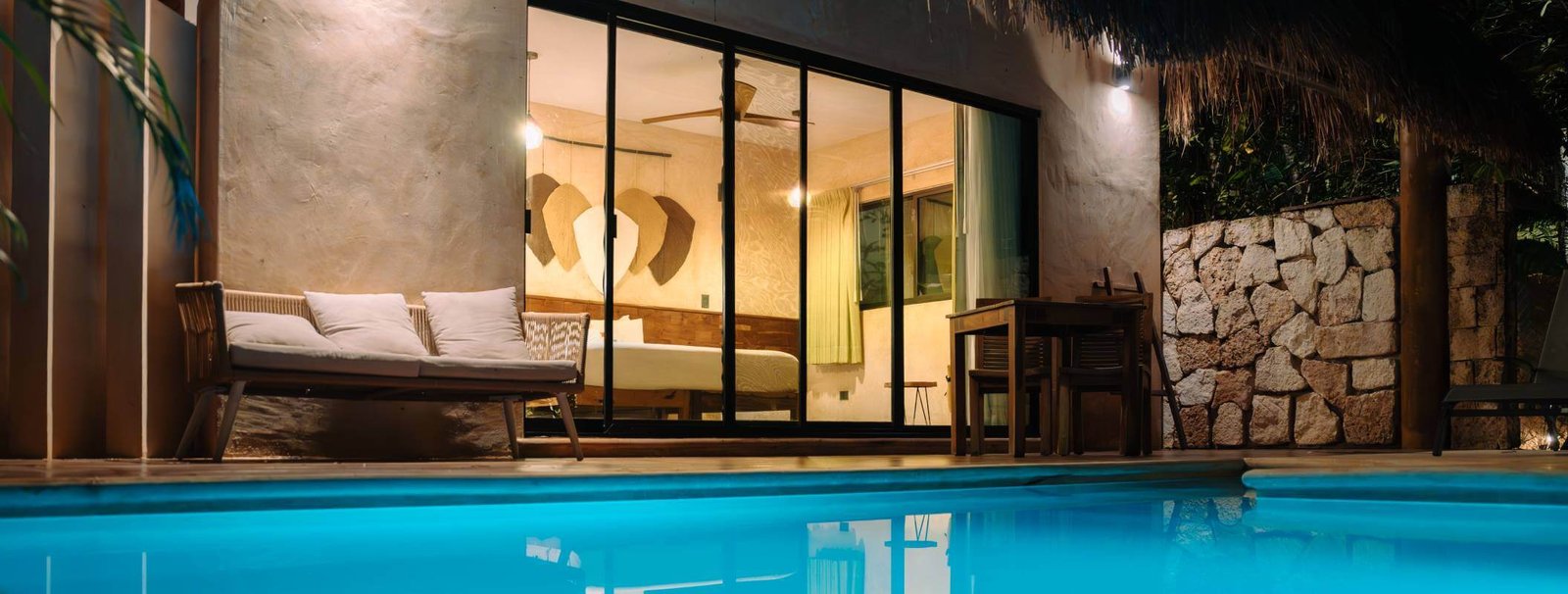Every year, at the end of October and beginning of November, Mexico dresses in color to celebrate the Day of the Dead, or Hanal Pixán in the Mayan culture. An ancestral tradition that it brings with it several customs, but the main icon of this event is to set up an altar.
That, more than a visual attraction, the Hanal Pixán Altars are a spiritual creation that allows us to establish a bridge between the past and the present. To celebrate it in the most accurate way, in this blog we share with you a complete guide to this incredible tradition.
All about the Altar of Hanal Pixán
1. The Hanal Pixán or Day of the Dead tradition
Before diving into the details of the Day of the Dead Altar, it is essential to understand the roots of this celebration. As we mentioned before, it is much more than just a holiday, especially when it comes to the Yucatán Peninsula.

As for the Mayan people, the Day of the Dead is transformed into the “Hanal Pixan”, which although in essence is the same, there are slight differences between the one and the other. Nevertheless, it is still a day to honor the souls of those who have passed away.
Which is celebrated from October 31st to November 2nd, dedicating a special day for different “types of souls”.
2. The Hanal Pixán Altars
The Altar of the Day of the Dead, or Hanal Pixán, is a beautiful tradition that is present in homes, schools, workplaces, and even establishments. Here, every detail has a deep meaning and is designed to honor the deceased uniquely.

Several decorative elements are used to elaborate it and with them, a connection between the world of the living and the dead is established. These can range from food and alcoholic beverages to toys for children.
3. What do the different levels of an altar mean?
A distinctive element of the altars for the Day of the Dead in Yucatán is its structure, which is composed of three levels, each one with a specific meaning. According to Maya culture, they symbolize the planes of the universe.
- The first level: The highest level represents the sky, here is where the religious images, a green wooden cross, very typical of the Mayan culture, and a rosary are placed. Elements that serve to sanctify the altar.
- The second level: The middle level represents the earth, where human beings live, and here flowers and typical food offerings are often placed.
- The third level: The lowest level symbolizes the underworld, which is why it is filled with candles to light the path of the spirits. As well as drinks and sweets in jícaras that the deceased tasted in life.
- What is placed on the floor: Finally, on the floor, it is customary to place a path of flowers (which starts at the foot of the door and goes to the altar). Candles, and incense are placed on the sides of the table to guide the souls to their offering.
While this is a traditional way of setting up an altar, the presentation of altars for Hanal Pixán can vary. In some homes it is customary to place three-story altars, in others one table, or to make one specifically for children and others for adults.
No matter which one you decide to make, the important thing is to commemorate those who are no longer with us.
4. Everything that goes into an Altar of Hanal Pixán
The elements that make up a Hanal Pixán Altar are essential to its meaning and purpose, here is a list of the key components!

- White tablecloth: Some consider the white tablecloth to symbolize purity and peace, others that it is simply an ornamental element to receive the deceased.
- Water: This is placed so that the souls can quench their thirst after their long journey from the afterlife, or after eating the food from the altar.
- Green wooden cross: One of the crucial elements, which represents the sacred ceiba tree, the center of the universe in the Mayan belief system.
- Photograph of the loved one: Placing a photo of the deceased on the altar is a way of remembering them as they were in life, and is part of the invitation to the offering.
- Images of saints: Being a tradition with a certain Catholic influence, images of saints and virgins can adorn the altar as a reminder of the family’s faith and religious devotion.
- Candles: Candles represent the light that guides the souls back to our world. For adults, they are usually black and white, while for children they can be used in colors.

- Flowers: Traditionally, cempasúchil flowers are used, which are believed to attract souls with their color and aroma.
- Food: The favorite dishes and foods of the dead are placed on the altar to nourish their souls. This may include tamales, mole, pan de muerto, fruits, and other foods typical of the region.
- Incense: The smoke of incense serves to establish the bridge between the world of the living and the dead, carrying the smell of the food to the relatives on the other side.
- Personal objects: Finally, the altar can also include the deceased’s favorite objects. For example, jewelry, clothes or in the case of children, toys.
As you can see the Day of the Dead altar is much more than a decoration, this tradition is an expression of love and respect that gives them the opportunity to connect with both their roots and their loved ones.
5. Celebrate Hanal Pixán at Aldea Cobá
If you are looking for a truly immersive experience to celebrate Hanal Pixán, there is no better place than Aldea Cobá, an authentic boutique hotel nestled in the Mayan community of Cobá. Where tradition and culture intertwine to offer you a unique experience.
Here you can enjoy authentic Mayan chocolate and other traditional delicacies of the region, as well as relax under the stars with outdoor movie screenings. And for those interested in learning about culinary traditions, the hotel will be offering a pan de muerto workshop, where you can take the taste of tradition home with you.
At Aldea Coba, the celebration of Hanal Pixan is an enriching experience that allows you to immerse yourself in the Mayan culture and celebrate the Day of the Dead in a special way.
For more information do not hesitate to contact the direct line 998 324 0198, or if you prefer, visit the website.







